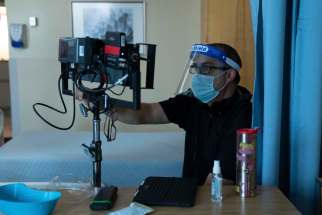A failing grade on back-to-school preparation
Read this article for free:
or
Already have an account? Log in here »
To continue reading, please subscribe:
Monthly Digital Subscription
$0 for the first 4 weeks*
- Enjoy unlimited reading on winnipegfreepress.com
- Read the E-Edition, our digital replica newspaper
- Access News Break, our award-winning app
- Play interactive puzzles
*No charge for 4 weeks then price increases to the regular rate of $19.00 plus GST every four weeks. Offer available to new and qualified returning subscribers only. Cancel any time.
Monthly Digital Subscription
$4.75/week*
- Enjoy unlimited reading on winnipegfreepress.com
- Read the E-Edition, our digital replica newspaper
- Access News Break, our award-winning app
- Play interactive puzzles
*Billed as $19 plus GST every four weeks. Cancel any time.
To continue reading, please subscribe:
Add Free Press access to your Brandon Sun subscription for only an additional
$1 for the first 4 weeks*
*Your next subscription payment will increase by $1.00 and you will be charged $16.99 plus GST for four weeks. After four weeks, your payment will increase to $23.99 plus GST every four weeks.
Read unlimited articles for free today:
or
Already have an account? Log in here »
Hey there, time traveller!
This article was published 25/09/2020 (1901 days ago), so information in it may no longer be current.
When Premier Brian Pallister’s government decided over the summer that in-person public education would resume this fall, did he, his cabinet ministers or his public-health advisors contemplate a major expansion of COVID-19 testing capacity?
We’re only two weeks into the school year, but the evidence seems rather compelling that they did not connect back-to-school with testing capacity. If that’s the case, it is an oversight that borders on negligence.
This is not to say that effective policy on COVID-19 testing isn’t a challenge. Best practices governing who should be tested and when are still evolving as we learn more about the novel coronavirus. There is still a vigorous debate, and no consensus, about the value of testing asymptomatic people, even those who have come into contact with a confirmed case of COVID-19.
But if there is one narrative that has held up through the evolution of the pandemic, it is that one of the best tools to allow us to move toward resuming a nearly normal life is the sufficient and expedited provision of testing.
Rapid-result saliva tests could be a game-changer. The United States has already authorized the use of these so-called “saliva tests,” which can produce results in less than an hour. Canada does not yet trust the technology to provide accurate results. Obviously, a rapid-result test that could theoretically be performed at home would be a major win in the fight against COVID-19.
However, until we have a universally accepted rapid test, we need to rely on government to provide the resources to ensure that everyone who needs to be tested using conventional methods — including, one presumes, some asymptomatic people — has access to a test, and that results are provided as quickly as possible.
Simply put, there is no excuse for not having expanded testing capacity immediately upon making the decision to resume in-person classes. One needn’t have been an epidemiologist to be able to predict that, notwithstanding the rigorous preventative measures that were in place, there were going to be new outbreaks of COVID-19 in schools.

Gathering large numbers of people in any indoor space creates an environment ripe for new infections. Given that reality, Manitobans needed to know that the children attending a school that experiences a COVID-19 outbreak — and their families — could get a test and results as quickly as possible.
The provincial government should have anticipated this problem and built extra testing capacity to rapidly screen students and staff in schools with outbreaks in order to maintain confidence in its back-to-school policy. It did not.
The disconnect between the back-to-school policy and testing capacity is even more disconcerting given that, two weeks into a school year in which we have already seen those anticipated outbreaks in at least two schools, we are still waiting to see an expansion of testing capacity.
Cost should not be an issue; Manitoba has been gifted $100 million from the federal government expressly for the purpose of performing more tests.
At this stage of the resumption of the public school year, on this critical public-health challenge, the Pallister government has so far earned a failing grade.
All Manitobans should hope that before the end of the school year, it manages to pull up its marks and in so doing, rebuilds public confidence in public education during the pandemic.













